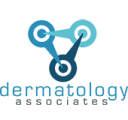If you have rosacea, you know it – you see it every day when you look in the mirror. Is there any way to get rid of those red, bumpy patches you desperately try to hide?
Rosacea is a condition that occurs in a seemingly endless cycle of flare-ups and remissions. It is most common in people over age 30 and first appears as redness on the cheeks, chin, forehead, and nose. Some people are unfortunate enough to also have rosacea flare-ups on their chest, scalp, ears, and neck.
To add insult to injury, leaving rosacea untreated can cause bumps and pimples to develop. In the most severe cases, rosacea causes the nose to become permanently red, swollen, and bumpy.
The Cause and Symptoms of Rosacea
People with rosacea have enlarged blood vessels in their faces. People who have fair skin and those whose faces become flushed easily have the highest risk of developing rosacea. Believe it or not, blushing is another common risk factor. Women are diagnosed with this skin condition more often, although it tends to be more severe in men.
If you suspect that you have rosacea, watch for these symptoms:
- Persistent facial redness. Redness on the face that looks like you’re blushing or that you spent too much time in the sun is an early indication of rosacea.
- Bumps and pimples. People often mistake pimples for acne and seek the wrong type of treatment. Rosacea bumps are small, solid, and red in color.
- Visible facial blood vessels. Enlarged blood vessels close to the skin’s surface may be noticeable to others.
- Eye irritation. Your eyes appear bloodshot, watery, and swollen. You may develop frequent sties. This symptom is the most serious because it can cause vision loss and damage to the cornea.
- Dry, thick skin. Your skin is drier and thicker than normal.
- Plaque. One or more raised red patches, called plaques, may appear.
- Facial swelling. Known as edema, facial swelling can appear with other symptoms or on its own.
Rosacea Treatment Options
Is there anything you can do about rosacea?
Yes, there is. New advancements in laser and light therapies bring renewed hope to rosacea sufferers. At Dermatology Associates, we combine cutting-edge technology with expert care to reduce—and, in some cases, eliminate—this condition.
BBL® HEROic™ and How It Helps Rosacea
One of our most advanced treatments is BBL® HEROic™ (Broadband Light High Energy Rapid Output Intelligent Cooling). This innovative IPL-based technology is a game-changer for managing rosacea symptoms. BBL HEROic works by gently delivering pulses of light to the affected areas. The energy penetrates the skin, targeting the visible blood vessels and redness caused by rosacea. This reduces the redness and helps stimulate collagen production, promoting healthier, more even-toned skin.
BBL HEROic stands out because of its fast, precise delivery and ability to target a larger surface area compared to traditional IPL treatments. This means more effective results in fewer sessions, with little to no downtime. Plus, the built-in cooling system ensures comfort throughout the procedure, making it ideal even for sensitive skin.
Within weeks of treatment, you’ll notice a significant improvement in facial redness, dilated blood vessels, and overall skin quality.
ClearSilk® for Rosacea Relief
For those seeking a gentle yet powerful approach, ClearSilk® offers another effective solution for rosacea management. ClearSilk is a non-invasive laser treatment designed specifically to improve skin tone, texture, and appearance. This FDA-cleared therapy uses a unique 1064 nm wavelength laser to target inflammation and vascular issues beneath the skin’s surface.
ClearSilk works by delivering heat through controlled laser pulses, which help reduce the appearance of redness and calm inflamed blood vessels. This treatment is safe for all skin types and requires no downtime, making it an attractive option for people with busy schedules.
Patients often describe ClearSilk as feeling like a warm, soothing sensation on the skin. Over just a few sessions, ClearSilk notably diminishes redness, flushes, and other hallmark rosacea symptoms while improving overall skin resilience.
Why Choose Dermatology Associates for Rosacea Treatment?
At Dermatology Associates, we understand how rosacea can impact both your appearance and your confidence. That’s why we are dedicated to offering the most effective, minimally invasive solutions available. Whether it’s the precision of BBL HEROic or the gentle power of ClearSilk, our team will work with you to create a personalized treatment plan tailored to your needs.
Both of these treatments, alongside our trusted NewSurg KTP laser, represent the best modern rosacea care technology. Combined with expert aftercare guidance, we help you achieve smoother, clearer, and healthier skin. We’re proud to provide these advanced options right here at our offices in Savannah and Vidalia.
If rosacea has you seeing red, don’t wait to take action. Contact Dermatology Associates today and explore how BBL HEROic, ClearSilk, and other cutting-edge treatments can restore your skin and confidence.
———————————–
Dermatology Associates offers a full spectrum of leading-edge medical, surgical, and cosmetic dermatology services from offices in Savannah and Vidalia.


